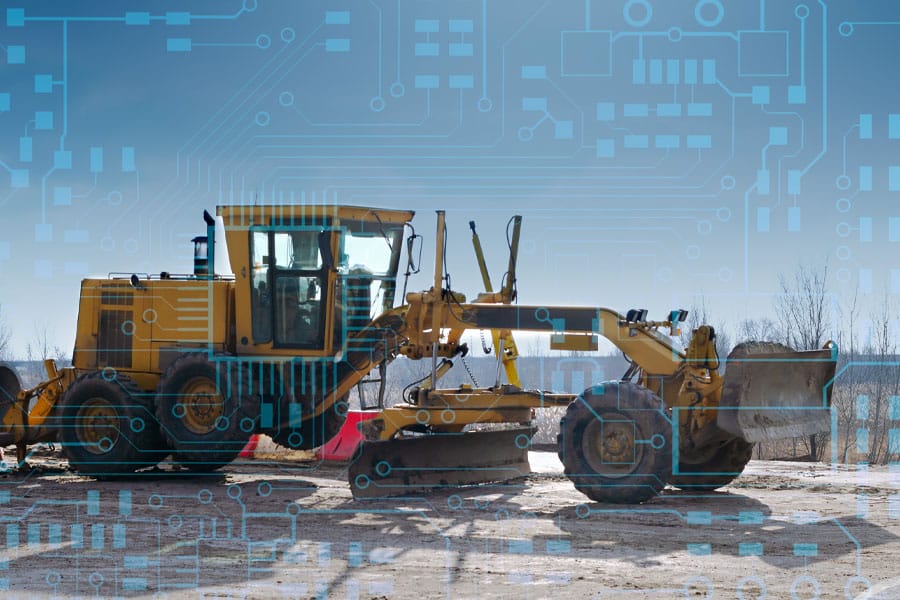An architectural technologist by trade, Stéphane Turbide owned his own firm providing 3D plans for customers and other services. But he knew he was losing business because he didn’t have the tools and technology to quickly produce iterations for his customers. “He was blocked from creating with the existing tools that he had,” said Patrick Murphy, who launched a startup with Turbide.
That frustration was a catalyst for the company Murphy and Turbide co-founded together in 2019. Maket is among a growing slate of generative artificial intelligence (AI) technology companies that aim to revolutionize the architecture, engineering and construction (AEC) industry.
“We really founded the company with the vision of being able to democratize architectural planning,” said Murphy, Maket’s co-founder and CEO.
Generative AI companies like Maket and Augmenta intend to streamline the design and construction process with tools that allow architects and engineers to design—and redesign—floor plans, electrical systems and full building designs almost instantly. And as they simplify some of the industry’s work, the tools also can help answer its severe labor shortage, according to the developers behind them.
“The prerogative is really to superpower them,” said Francesco Iorio, CEO of Augmenta, an automated building design tool that will offer sustainable, code-compliant and fully constructible buildings in hours. “It’s to enhance their productivity and their abilities.”
What is generative AI?
Generative AI describes technology that can produce—or generate—new text, images, code and other outputs based on information on which it was trained. To create the new content, the generative AI models are fed existing large datasets, such as web pages, books, audio and images. The model then spits out information intended to simulate that data it was trained on.
In November 2022, with the public release of generative AI tool ChatGPT, interest in generative AI has spiked. Almost nobody was searching for the term “generative AI” in October 2022, according to Google Trends. By late May 2023, it was at peak popularity.
But the concept has been around for decades; it was first introduced in the 1960s, according to TechTarget. Iorio was a pioneer in generative design during his decade at Autodesk, where he served as the inventor and principal investigator of its Project Dreamcatcher, a generative design system. He left Autodesk in 2019 to launch Augmenta.
Building AI models for AEC
Building models like Augmenta and Maket is complex, complicated and deliberate work. When designing mechanical systems and entire buildings, generative AI companies in the construction industry can’t risk the “hallucinations,” or wildly incorrect information, that have cropped up in other models. What’s more, the construction industry, in particular, has been slow to adopt any technology.
“This is leading-edge tech, and we want to be very, very careful,” Iorio said. “The industry is very conservative.”
Augmenta is trained on federal building code, along with a large synthetic dataset that developers have created using those rules and regulations. As the solution is rolled out, users can feed in local rules and regulations as well, Iorio said. Eventually, they’ll automatically be part of the solution.
“It’s literally what people do to train self-driving cars,” Iorio said. “They cannot afford to have millions of cars run around cities. Instead, they do driving simulations and they feed the data from the virtual world that exists in the simulations through the machine learning systems. We’ve done a similar thing.”
Maket combined a variety of algorithmic approaches to create its foundational floorplan generation model. To do the work, it partnered with Mila, the world’s largest deep learning research institute. “We had to create our own algorithm from scratch,” Murphy said.
Construction: Start to Finish
It’s early days for both Maket and Augmenta, but development is moving quickly. Maket, which is in beta mode, has more than 20,000 users. Augmenta is in the market for a small number of pilot deployments. But as the technology is fine-tuned, both Murphy and Iorio predict their tools will transform the industry.
Maket’s features include customized architectural plan generation based on programming needs and environmental restraints; a virtual assistant with information about materials, costs and design options; a virtual designer that allows users to quickly customize designs based on client needs; and streamlined regulatory research.
“What’s really important is providing tools in the early stages to automate real estate planning and, eventually, be able to build homes faster, in a more efficient way,” Murphy said. “Our ultimate vision is being able to link this generative technology with autonomous 3D printing technology of new homes and really going from start to finish.”
At Augmenta, the model is starting from the inside out, providing generative designs for mechanical systems and working its way to layout, architecture and all other aspects of building design.
Catalogs from designers’ and contractors’ favorite suppliers can be added to the platform to make ordering easier. Users can analyze the best design, based on customer needs, material availability, sustainability and cost.
“With this technology, an engineer or a contractor can answer questions that normally are not possible to answer and are better to be understood much earlier in the process,” Iorio said.
Will Robots Take Over?
With any discussion of AI comes worries that robots will replace humans. But, in an industry with such severe labor shortages where the details are critical, Murphy and Iorio say humans will still play vital roles.
“The stakes are so high,” Murphy said. “You’re going to need to have a human supervising, saying, ‘This is a starting point. How can I finalize this and make this better?’”
Iorio encourages AEC professionals to think of the tools as more of an assistant that removes some of their most tedious and time-consuming work.
“What they’re going to do from now on, after the introduction of this technology, is not disappear, but be a curator,” he said. “It’s like having a team of more junior designers behind your screen.”
Ultimately, as generative AI tools become available for the industry, those who don’t deploy them risk not being competitive, Iorio said. Clients will start seeking contractors, engineers and architects who can rapidly respond to their design requests or demonstrate, with data, which design is most sustainable, cost effective or quick to build. “In the fullness of time, in my very humble opinion, it’s going to absolutely be table stakes whether it’s from us or from somebody else,” Iorio said. “This type of automation technology will be a must.”












